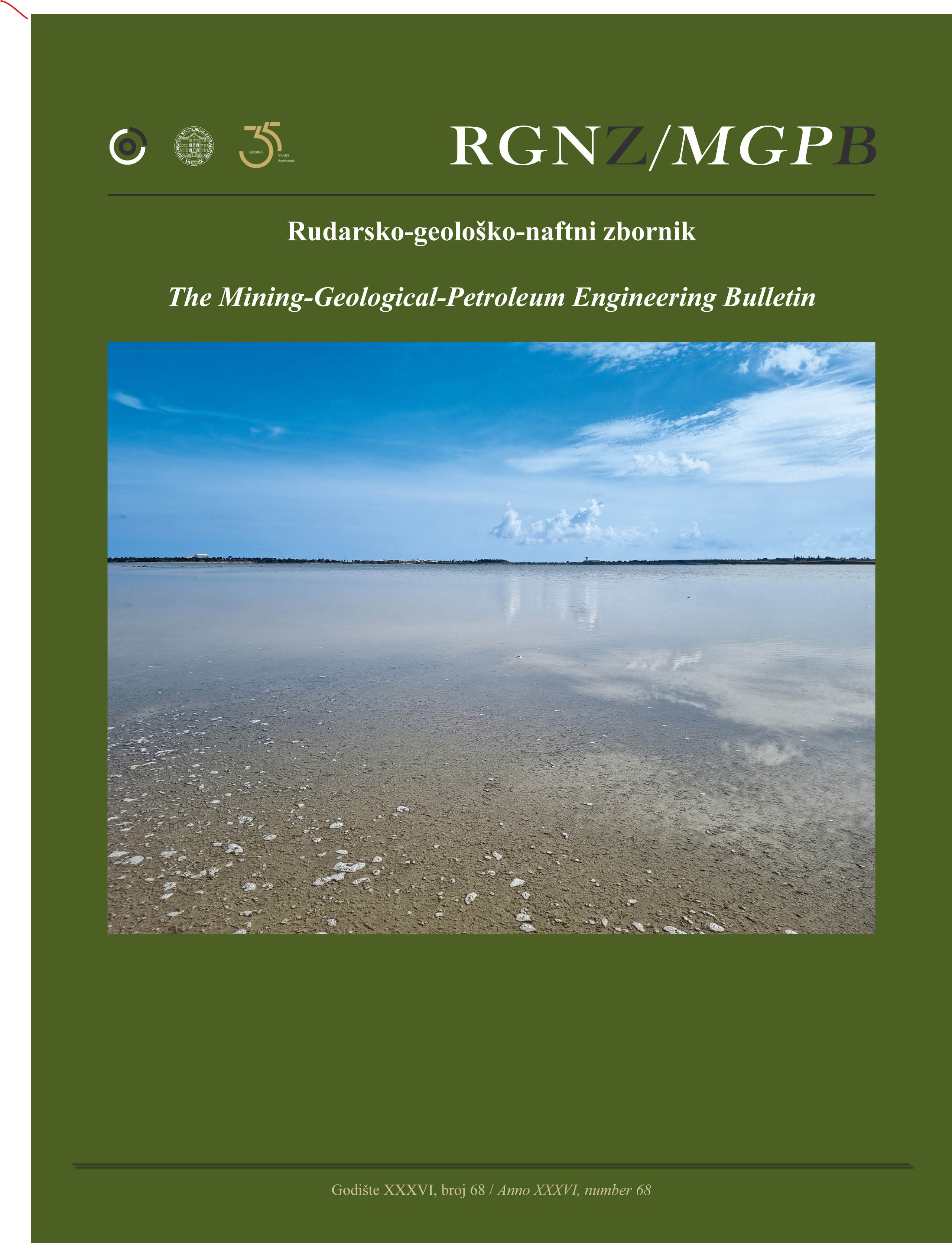Geochemistry and petrography of metamorphic sole amphibolites from the Slatina Quarry, Mt. Zrinska Gora, Croatia
DOI:
https://doi.org/10.17794/rgn.2024.2.8Keywords:
amphibolite, metamorphic sole, peridotite, tholeiitic basalt, back-arc basinAbstract
The investigated Mt. Zrinska Gora amphibolites are a part of the metamorphic sole of the Banovina ophiolite complex. Mineral composition and other petrographic characteristics of amphibolites and adjacent peridotite were investigated by polarised microscopy and chemical analyses of rocks were obtained by a combination of inductively coupled plasma mass and emission spectrometry. The main minerals in these garnet-bearing amphibolites are amphibole and plagioclase with accessory garnet, sphene, spinel, opaque mineral ± clinopyroxene ± quartz ± actinolite ± zoisite-clinozoisite ± prehnite ± pumpelyite and ± clay minerals. Kelyphitic corona is developed around garnet. The amphibolites have nematoblastic, nematogranoblastic, porphyroblastic and porphyroclastic textures and homogenous to foliated structures. The presence of clinopyroxene in some of the investigated amphibolites points to their possible formation under P‒T conditions of upper amphibolite facies. The greenschist facies retrograde metamorphism and subsequent surface weathering of amphibolites is also evident. The chemical composition of rocks indicates that protoliths of most amphibolites were tholeiitic basalts, initially formed in island arcs and the adjoining back-arc basins. During the intraoceanic subduction in Jurassic Neotethys Ocean basalts/basaltic tuffs of island arc tholeiite affinity and back-arc basin basalts, positioned on the top of the down-going oceanic slab, were welded to the base of the hot over-riding mantle wedge, metamorphosed to amphibolite rocks and obducted together with ophiolites on the Adria continental margine. The new described amphibolite type having peridotite protolith characteristics originated as the consequence of the hydration of the bottom part of the overlying mantle wedge.
Downloads
Published
How to Cite
Issue
Section
License
Copyright (c) 2024 Marija Putak Juriček, Vesnica Garašić

This work is licensed under a Creative Commons Attribution 4.0 International License.
Creative Commons-BY
Authors who publish with this journal agree to the following terms:
In agreeing this form, you certify that:
- You read the ethical codex of the RGN zbornik available at journal web.
- You submitted work is your original work, and has not previously been published and does not include any form of plagiarism.
- You own copyright in the submitted work, and are therefore permitted to assign the licence to publish to RGN zbornik.
- Your submitted work contains no violation of any existing copyright or other third party right or any material of an obscene, libellous or otherwise unlawful nature.
- You have obtained permission for and acknowledged the source of any illustrations, diagrams or other material included in the work of which you are not the copyright owner.
- You have taken due care to ensure the accuracy of the work, and that, to the best of your knowledge, there are no false statements made within it.
- All co-authors of this submitted work are aware of, and in agreement with, the terms of this licence and that the submitted manuscript has been approved by these authors.
Publication licence
You retain copyright in your submitted work, according to journal license policy (CC-BY). By signing this form you agree that RGN zbornik may publish it under the publication licence. In summary the licence allows the following:
Anyone is free:
- To copy, distribute, display, and perform the work.
- To make derivative works.
Under the following conditions:
- The original author must always be given credit.
- The work may not be used for commercial purposes.
- If the work is altered, transformed, or built upon, the resulting work may only be distributed under a licence identical to this one.
Exceptions to the licence
In addition to publishing the work printed under the above licence, RGN zbornik will also enable the work to be visible online.
The journal editorial can change the licence rules anytime but it cannot retroactively restrict author(s) rights.


